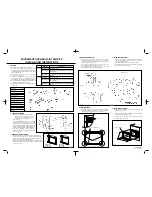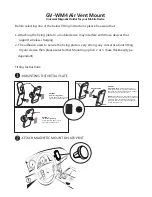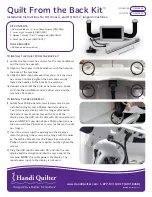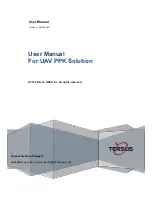
SKF Machine Condition Indicator
How to Interpret and Acknowledge MCI Alarms
SKF Machine Condition Indicator
9
User Manual
To change from percentage alarm mode back to threshold alarm mode:
The procedure to re-activate threshold mode is similar to that for activating percentage
mode.
Read key action
LED blink
sequence
change
# blinks /
seconds
Indicating
Notes
1- Apply read key for
approximately 20
seconds
Until LEDs
change to solid
GREEN
Solid
Start of alarm
mode change
During the 20 seconds, the
MCI is progressing through its
activation / alarm status
procedure
2 - Immediately
remove read key
LEDs change to
quick
GREEN
blinks
1 blink every
second
You have 4 seconds to remove
read key
3 - Immediately
reapply the read key
LEDs change to
very slow
GREEN
blinks
1 blink every 5
seconds
Lasts about
10 seconds
MCI is in
threshold
mode
You have 4 seconds to reapply
read key
1 blink every 5 seconds
indicates threshold alarm
mode is active
You may remove the read key
after slower blinks commence
LEDs change to
solid
GREEN
Solid
Lasts about
10 seconds
Procedure is
complete
How to Interpret and Acknowledge MCI Alarms
Alarm Detection and Verification
During measurement collection, if the MCI detects an alarm condition, it automatically
verifies the alarm condition by retrying its measurements. This helps rule out transient
conditions and false alarms. When the MCI detects an alarm condition, it goes back to
sleep for an hour and then wakes up again to retry the measurements. It can repeat this
hourly alarm verification process for up to twelve hours (twelve retries) depending on the
“strength” of the alarm. For example, if the alarm level is exceeded by only a small
amount, the MCI may verify the condition for up to twelve hours (12 retries) before it
displays its red alarm LEDs. However, if the alarm level is exceeded by a large amount,
the MCI recognizes this and performs fewer attempts to verify the alarm condition before
it shows its red alarm LEDs. Thus, stronger alarms display the red alarm LEDs faster
than weaker alarms, and all alarms are verified.
To save battery life, the MCI’s vibration measurements must exceed a
minimum threshold level (.5 gE or 3 mm/s (.17 in/s P)) to validate that
the machine is running. If the measured vibration is below these levels,
the MCI does not proceed with the alarm validation process.






































